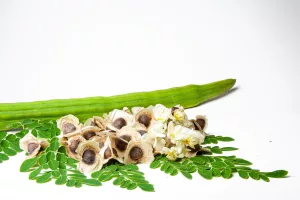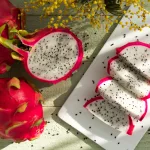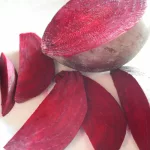Sunflowers are members of the genus Helianthus. In Greek, helios means “sun” and “anthus” means “flower,” so together they form the name “helianthus.” Sunflowers were first domesticated in North America over 4,500 years ago and can trace their origins back to that continent. This is due in part to the fact that the plant as a whole can be consumed, from leaves to stalks to roots. The first people to cultivate these plants did so for their food value; early Americans ground the seeds into flour and used it in bread.
Typically, sunflowers bloom in the summer and early fall, with vibrant blossoms that range in color from yellow to orange to red and are arranged around a disk that is relatively flat in the center. The flowers are actually composed of a cluster of smaller flowers, despite their appearance. As a result of the flowers’ attractive scent, pollinators like bees are drawn to them. A home filled with cheerful flowers can help alleviate stress, anxiety, and depression. they are a popular ingredient in many different types of home remedies, including teas, bath bombs, bath oils, massage oil, and cooking. You just can’t get enough of those sunny flowers, could you? Here is what you should know about the sunflower plant!
Fascinating facts about the sunflower!

1. Vitamin D is abundant in Its oil
Due to their occupation or location, some people are unable to get the recommended amount of sunlight each day. Vitamin D, as well as vitamins A and E, phosphorus, magnesium, selenium, copper, and iron, can all be found in high concentrations in its oil. To make up for a nutritional shortfall, try supplementing with its oil.
2. There is a wide range of colors present in It
Sunflowers are easily recognized by their large, bright yellow petals and dark brown, central disk. In light of this, you might be surprised to learn that there is a spectrum of colors beyond what you currently perceive. While some colors are common, others are more uncommon, and each color has its own significance.
- Yellow sunflowers – Classic yellow sunflowers. The bright yellow of it is both eye-catching and impossible to miss. Plus, they stand for something eternally good, true, and correct.
- Red sunflowers – Sunflowers with red petals typically have a black center. These are certainly unique, but they’re also stunning. And they symbolize power and optimism.
- Orange sunflowers – When it comes to attracting pollinators, bees and hummingbirds, nothing beats an orange sunflower. It’s said that they bring vitality, joy, and success.
- White Sunflowers – They are the most unusual variety. They aren’t really white, but rather a very light yellow with a dark black center. They are symbolic of innocence, rebirth, and peace, making them a wonderful token of congratulations for a new beginning.
- Pink sunflowers – Unique and lovely, they have dark pink petals and stems with lighter pink tips. Plus, they symbolize youth and health.
- Purple sunflowers – Lovely and unusual, they are a great addition to any garden. They are a stunning flower with symbolic significance related to wealth, majesty, and royalty.
3. Sunflowers are a type of daisy
The sunflower is a member of the daisy family (Asteraceae), which contains over 1,500 genus names and more than 20,000 species. The genus of this group of plants contains more species than any other. Sunflowers, chrysanthemums, and lettuce are also members of the same family as daisies.
4. The oil can be used for a variety of things.
Its oil is a great alternative to regular cooking oil and has nutritional benefits as well. In addition to its use in conditioning hair, its oil is excellent for preserving the suppleness of leather.
5. It has coarse leaves.
The leaves of a sunflower have a spiky, oval shape and a rough, hairy surface; they are 30 cm in length. The upper surface of the leaf is a dull green, and the petiole is a light green. Both are covered with short hairs.
6 The peak of the Plant bloom occurs around the middle of summer
Sunflowers typically begin blooming in the summer, reaching their peak around the middle of the year. However, those who start late can still catch up by the end of the year.
7. On a cloudy day, They don’t face each other.
It’s a common misconception that plant turn their faces toward each other on overcast days. It’s not true, despite the fact that it’s one of the cuter sunflower facts. It don’t do anything if the sun isn’t shining, so they just sit there if it goes away.
8. Those that are still young or immature will follow the path of the sun on cloudy days
Even if the sun is completely obscured by clouds, immature or young sunflowers will continue to follow its path. When it is fully grown, it will no longer care which way the sun is coming from because it will have “learned” to be content with the limited sunlight it receives.
9. Mature sunflowers always have their faces turned toward the east
The plant may face the sun for the majority of the day, but there will come a time when it will turn its back on the sun. As it matures, it will stop tracking the sun’s path and will instead keep its face directed due east.
10. They have medicinal properties.
Sunflower leaf tea is a safe, all-natural option for reducing high body temperatures. Its leaves, when crushed, are a remedy for wounds, swellings, spider and snake bites. Additionally, the flower tea can be used to treat malaria and respiratory issues.
In Greek mythology, Clytie, a water nymph, fell in love with Apollo, the god of the sun, who captivated the world from atop his golden chariot. Clytie was nearly driven to insanity by his rejection of her love. She went without sustenance for several days while she watched the stars for Apollo’s arrival. Ultimately, she was transformed into a sunflower, a flower that always faces due south as the sun travels across the sky.
Following the myth of Clytie and Apollo, it represent devotion and adoration. But in different cultures, they mean different things. They represent longevity, health, and good fortune in Chinese culture. Meanwhile to Native Americans, sunflowers represented provision and harvest . Essentially anywhere you go, you’ll find that they are a wonderful flower that brings happiness to many.
Disclaimer: This is for informational purposes only.
Did you find this helpful? Let us know in the comments.
Source: Facts
You can also visit our Facebook and YouTube pages to know more about plants and their health benefits.
You might also like:
- 5 Medicinal Uses Of Yellow-Berried Nightshade You Definitely Should Know
- Mint Leaves Health Benefits You Should Know About
- 8 Remarkable Health Benefits Of Garlic That You Should Know About
- 9 Surprising Health Benefits Of Java Plum That Will Blow Your Mind
- 5 Ways To Use Sandalwood And Its Benefits For The Skin








